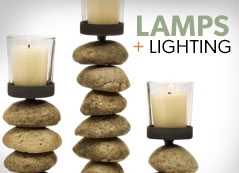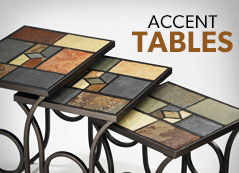
Mattresses
Well it's time to get a new mattress and bedding to upgrade your bedroom living and sleeping experience! In today's modern world there are so many options, varieties, and styles to choose from when it comes to mattresses and bedding. Good rest is important to a person's health and equips that person with a rested mind and body and with readiness to take on the new day's events! When it comes to mattresses and bedding, the choices are exciting. You can choose from traditional types of mattresses or you can choose from the new, modern to futuristic experience you will find in a memory foam mattress.
Mattresses and bedding come in a wide variety of styles, brands, and types. Your typical queen-size mattress is a mattress or big mat placed atop a bed, upon which to sleep or lie. Mattresses come in many sizes like the Twin/Single, the Double/Full, the Queen, King, and the California King size.
With the typical bed you will find box-springs which consist of a rigid frame that contains extra-heavy-duty springs. This type of foundation contributes to softer support and a bouncier mattress. Because box-springs can cause mattresses to sag, many manufacturers add high-density block foam underneath the coils or provide a rigid foundation. Traditional wood foundations are usually made of soft woods, such as pine. They usually consist of seven or eight support slats covered with cardboard. This type of foundation increases the feeling of firmness and stability. Next upholstery layers cover the mattress and provide cushioning and comfort. Some manufacturers call the mattress core the "support layer" and the upholstery layer the "comfort layer." The upholstery layer consists of three parts: the insulator, the middle upholstery, and the quilt. The insulator separates the mattress core from the middle upholstery. It is usually made of fiber or mesh and is intended to keep the middle upholstery in place. The middle upholstery comprises all the material between the insulator and the quilt. It is usually made from materials which are intended to provide comfort to the sleeper, including regular foam, felt, polyester fibers, cotton fibers, egg-crate foam, and non-woven fiber pads. The quilt is the top layer of the mattress. It is made of light foam or fibers stitched to the underside, it provides a soft surface texture to the mattress and can be found in many different degrees of firmness. The protective fabric cover which encases the mattress is called the "ticking." It is usually made to match the foundation and comes in a wide variety of colors and styles. Most ticking is made of synthetic fibers like polyester, or acrylic; or of natural materials such as latex, cotton, silk, and wool. Many parameters determine mattress quality. Pressure distribution, skin microclimate, hygiene, edge support, and long-term stability are of few of these examples that determine the quality of a mattress. Other parameters, such as firmness, are key for the sleeper. In general if you want to know what kind of mattress fits you, here's the breakdown, firm mattresses are recommended for stomach and some back sleepers, soft mattresses are recommended for side sleepers, and medium mattresses are recommended for the majority of back sleepers. Some brands offer mattresses with one softer side and one firmer side, or with adjustable firmness levels, to accommodate sleepers who share a bed.
Modern Mattress Background
The core of a typical mattress is designed to support a sleeper's body. Modern spring mattress cores, often called "innersprings," are made up of steel coil springs, or coils. Although coil count is a consideration for helping to choose a new mattress, it should not be the deciding factor. There are a number of different factors that contribute to the comfort, durability and support offered by a particular innerspring. An Innerspring coil design, the thickness of wire, the number of turns, its metal composition, tempering, etc, all contribute to the potential of the innersprings in the mattress. In your typical mattress there have been four different types of coils used throughout modern time. The first kind of coils were called "Bonnell coils." These are the oldest and most common. The Bonnell coil was first adapted from buggy seat springs of the 19th century and they are still prevalent in less expensive mattresses! Bonnell coils are hourglass-shaped, and the ends of the wire are knotted or wrapped around the top and bottom circular portion of the coil and then self-tied. Another type is the "Marshall coil," also called known as "pocketed coils." Pocket coils are each wrapped in a fabric that encases it. Marshall coils are usually are tempered or carbon magnesium is added. Some manufacturers pre-compress these coils, which makes the mattress firmer and allows for motion separation between the sides of the bed. The third type of coil is called the "Offset coil." These coils are designed to hinge and conform to body shape. They are very sturdy and the stable innersprings provide great support. Lastly, "Continuous coils" are coils that Work by a hinging effect that is similar to that of offset coils. They are excellent at distributing body weight, and limiting motion transfer.
Another kind of mattress is the "Air mattress" which uses an air chamber instead of springs to provide support. With air mattresses, quality and price can range from very cheap ones such as ones that you would get for camping and temporary places to sleep all the way up to high-end luxury beds! When compared to inner-spring mattresses, the price is generally comparable. In today's modern world air beds typically have the ability to adjust the firmness of the mattress and also have the ability to maintain different settings for each side of a mattress.
Memory Foam Mattress
The most exciting, innovative, and popular mattress available today is the Memory Foam mattress! Memory foam was developed for NASA to provide relief for astronauts undergoing G-forces during space shuttle take offs! It was never used in the space program, but was used in medical applications, for example with patients suffering from pressure sores or bed-bound for a long period. It responds to your body's heat and molds around you, relieving pressure points and improving circulation. It provides a hypo-allergenic sleeping surface that is also mold and mildew resistant. It also instantly responds to touch and temperature. Today most mattress manufacturers offer a line of memory foam mattresses. The reason memory foam reacts to heat so well is because memory foam is made from polyurethane with additional chemicals that add to its viscosity level and thereby increasing its density. Memory Foam is often referred to as visco-elastic polyurethane foam. Depending on the chemicals used and its overall density, it is firmer in cooler temperatures and softer in warmer environments. Higher density memory foam reacts to your body's heat which allows it to mold itself to the shape of a warm body within a few minutes. Lower density memory foam is pressure-sensitive and will mould more quickly to the shape of the body. The example often used to demonstrate its properties is that if you press your hand into the foam and then remove it, it will leave a clear impression in the foam. Initially memory foam was very expensive for general use, but in recent years it has become cheaper to produce and it is now widely available! It is most commonly used in mattresses, pillows and mattress pads. Memory foam remains useful in medical-related uses too, such as wheelchair seat cushions, hospital bed pillows, and padding for persons suffering long-term pain or postural problems! Memory foam cervical pillows, for example, help to alleviate chronic neck pain. Its heat-retaining properties are also helpful to some pain sufferers who need the added warmth given by the memory foam to alleviate pain. A memory foam mattress is usually denser than your ordinary foam mattress. It is more supportive then your ordinary mattress and also heavier. It is often seen as a good compromise between the comfort of a soft mattress and the supportiveness of a firm one. Memory foam mattresses often sell for more than traditional mattresses but they last a lot longer. Beds are not always only for sleeping so it is important to consider that moving around on hands or knees on a memory-foam mattress is different from more standard mattresses. Knees will sink a lot deeper making bedroom activities difficult at first.
History
The word mattress comes from Arabic words "mat" meaning "to throw" and "cushion" meaning a "place where something is thrown." During the Crusades, Europeans adopted the Arabic method of sleeping on cushions thrown on the floor, and the word "materas" eventually descended into Middle English through the Romance languages.
Though a mattress may be placed directly on the floor, it is usually placed atop a platform (such as a bed or a metal spring foundation) to be further from the ground. Historically, mattresses have been filled with a variety of natural materials, including straw and feathers. Modern mattresses usually contain either an innerspring core or materials such as latex, viscoelastic, or other polyurethane-type foams. Mattresses may also be filled with air or water.
Here are some different beds through out history. Did you know that in 3600 B.C. people in Persia typically slept on beds made of goatskins filled with water? Your Typical Egyptian slept on palms thrown in a corner in their homes. Mattresses in Ancient Rome consisted of bags of cloth stuffed with reeds, hay, or wool while the wealthy used feather stuffings! In the early 18th century mattresses began to be stuffed with cotton or wool. In 1857 the steel coil was invented that forever changed mattresses! In 1873 a man named Neil Arnott invented the waterbed as a treatment and prevention of pressure ulcers! In the 1950's the mattress company Sealy introduced the Posturepedic mattress which was designed with Orthopedic surgeons to give the sleeper the best sleep quality of that modern age. In the 1980's air mattresses were introduced and in 1992 the introduction of memory foam took bedding to the high level it is at today!
Maintenance and care
The Better Sleep Council suggests that a quality mattress should provide 8 to 10 years of good support and comfort. Many different things may factor into of a mattress of course, but if you generally take good care of it, it will last that length of time. Your mattress should be placed atop a firm base to prevent sagging. Did you know that mattresses should be rotated approximately once every three months to ensure even wear? Also, it is suggested that two sided mattresses be flipped twice per year! Folding and bending of the mattress should be avoided if possible, so get that idea out of your head. Your mattress should not be soaked because mildew will develop inside the upholstery. If you want to clean your mattress, it can be cleaned with a vacuum or with mild surface cleaner and a slightly damp cloth. A mattress protector helps prevent stains.
Once a mattress no longer feels supportive it should then be replaced. If your mattress is worn out, if the springs can be felt poking through the upholstery layer, or if there is visible sagging or deformity, lumpiness, and excessive squeaking then you know its time for an upgrade!
Summary
In today's modern world there are so many options, varieties, and styles to choose from when it comes to mattresses and bedding. Getting good rest is important to a person's health and gives that person the rested mind and body and with readiness to take on the new day's events! When it comes to mattresses and bedding your choices are exciting. So choose from traditional types of mattresses or choose from the new, modern to futuristic experience you will find in a memory foam mattress! Give yourself the comfort and great sleeping experience that you need! Good luck!




























